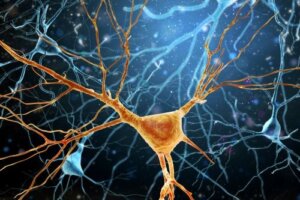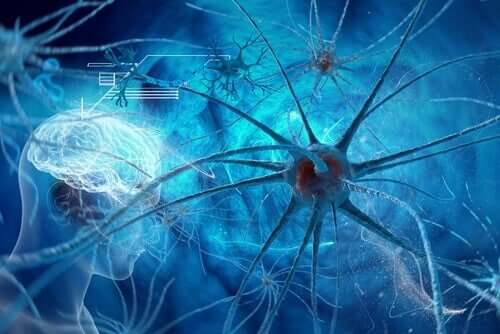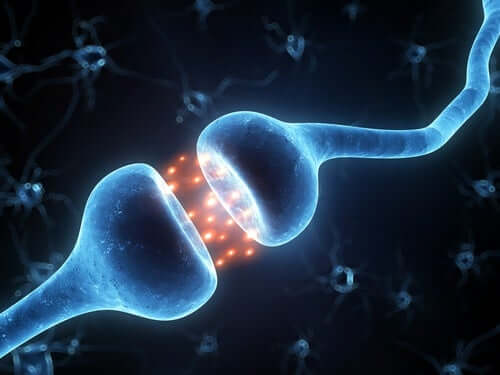Von Economo Neurons - Cells for Socializing

Science is paying close attention to von Economo neurons. Even though they discovered them in 1925, it wasn’t until this century when they began to study this subject in depth. In fact, they still know little about them, even though they’re certainly important in the human brain.
We know that von Economo’s neurons are scarce. The human brain has around 100 billion neurons and only between 200,000 and 400,000 are of this kind. We also know they’re three times larger than normal neurons, and also faster.
The most recent studies point out that von Economo’s neurons are a kind of brain “conductor.” This means they don’t act on a specific organ or function, and only determine the action of the brain. For instance, they don’t produce thoughts, but they do make them possible.
What are von Economo neurons?

These are specific types of neurons and are usually located in well-defined areas of the brain: the insula and the anterior cingulate (AC). They’re also known as “spindle neurons” and are only present in humans, humpback whales, killer whales, bottlenose and Risso’s dolphins, Asian and African elephants, sperm whales, belugas, and rorquals.
Constantin von Economo first described these neurons and this is where their name comes from. He first mentioned them in his work Atlas of Cytoarchitectonics of the Adult Human Cerebral Cortex. He also described encephalitis lethargica.
The scientist pointed out that these neurons are different from the others; they’re elongated, spindle-shaped, that is, cylindrical, and narrower at the ends. He also indicated their location. It wasn’t until the year 2000, that someone picked up on where he left things.
You may be interested in reading about Magnetic Therapy for Multiple Sclerosis: What Does the Evidence Say?
Characteristics of von Economo neurons
Researchers were able to study these neurons in detail thanks to computer mapping of the brain. Von Economo may have discovered them but they’ve been present in hominids for about 15 million years. There are more of these neurons in the brains of humans and great apes.
They appear during the gestation period of human beings around the 35th week and multiply until the 4th year of age. They multiply faster during the first eight months of human life.
There’s a similar amount of these cells in both cerebral hemispheres at birth. After that, they seem to concentrate in the right hemisphere. This type of neurons have receptors for dopamine, vasopressin, and serotonin — substances closely related to human behavior.
Functions

So far it’s been possible to establish that von Economo neurons are involved in self or identity formation, decision making, social connection, concentration, and monitoring of other areas of the brain.
They also perform other complex and fundamental functions. It consists of comparing the signals that arise from the brain itself with the signals perceived by the senses. That is, they provide us with what we know as a “sense of reality.”
These neurons quickly communicate with large areas of the brain due to their size. Scientists believe that deficiencies in their functioning are related to problems such as autism and dyslexia. They also believe these cells could explain the emergence of that entity we refer to as the “mind.”
Don’t stop reading: Six Ways to Regenerate Your Neurons
Von Economo neurons and the mind
There are indications that von Economo neurons influence healthy social connections as well as self-awareness processes. A study conducted by neurologist W. Seeley, at the University of California, found that people with frontal-temporal dementia had damage in these neurons.
Those affected by this disease lose all capacity for empathy and are erratic, insensitive, and lose their sense of responsibility, even to themselves. Seeley did several autopsies on people who had this disease and found damage in about 70% of their von Economo neurons, on average.
Other neurophysiologists such as Naomi Eisenberger and Cole Steve pointed out that social connection has a powerful influence on health. Thus, those who interact with others on a regular basis have fewer illnesses and tend to live longer.
The presence of these neurons in highly social animals reinforces the idea that these neurons determine sociability and the processes associated with it. Interestingly, the use of psychedelics inhibits the activity of the areas where these neurons are present.
All cited sources were thoroughly reviewed by our team to ensure their quality, reliability, currency, and validity. The bibliography of this article was considered reliable and of academic or scientific accuracy.
- Pareja, F. B. (2010). La conciencia, la conciencia de sí mismo y las neuronas de von Economo. Revista de neurología, 50(7), 385-386.
- Yang L, Yang Y, Yuan J, Sun Y, Dai J, Su B. Transcriptomic Landscape of von Economo Neurons in Human Anterior Cingulate Cortex Revealed by Microdissected-Cell RNA Sequencing. Cereb Cortex. 2019;29(2):838–851. doi:10.1093/cercor/bhy286
- Allman JM, Tetreault NA, Hakeem AY, et al. The von Economo neurons in the frontoinsular and anterior cingulate cortex. Ann N Y Acad Sci. 2011;1225:59–71. doi:10.1111/j.1749-6632.2011.06011.x
- González-Acosta CA, Escobar MI, Casanova MF, Pimienta HJ, Buriticá E. Von Economo Neurons in the Human Medial Frontopolar Cortex. Front Neuroanat. 2018;12:64. Published 2018 Aug 6. doi:10.3389/fnana.2018.00064
- Ludwig PE, Varacallo M. Neuroanatomy, Neurons. [Updated 2018 Nov 14]. In: StatPearls [Internet]. Treasure Island (FL): StatPearls Publishing; 2019 Jan-. Available from: https://www.ncbi.nlm.nih.gov/books/NBK441977/
- Lodish H, Berk A, Zipursky SL, et al. Molecular Cell Biology. 4th edition. New York: W. H. Freeman; 2000. Section 21.1, Overview of Neuron Structure and Function. Available from: https://www.ncbi.nlm.nih.gov/books/NBK21535/
- Kim EJ, Sidhu M, Gaus SE, et al. Selective frontoinsular von Economo neuron and fork cell loss in early behavioral variant frontotemporal dementia [published correction appears in Cereb Cortex. 2016 Apr;26(4):1843]. Cereb Cortex. 2012;22(2):251–259. doi:10.1093/cercor/bhr004
This text is provided for informational purposes only and does not replace consultation with a professional. If in doubt, consult your specialist.








